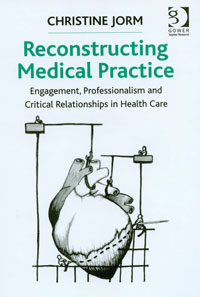
Reconstructing medical practice: engagement, professionalism and critical relationships in health care.
Christine Jorm. Farnham, Surrey, UK: Gower Publishing Limited, 2012 (244 pp, $123.95). ISBN 9781409429753.
PROPOSALS FOR CHANGE, states Machiavelli, with whom the book opens, are met with retaliation from those “who do well out of the old order”. Jorm’s book regards “the old order” as “senior consultants doing it this way for twenty or thirty or forty years”. But another, more recent, order is also under fire: the increasing bureaucratic regulation of medical practice enacted by “primitive and poorly resourced” management.
- Rick A M Iedema1
- Centre for Health Communication, University of Technology Sydney, Sydney, NSW
Correspondence:
Online responses are no longer available. Please refer to our instructions for authors page for more information.




